I’m often asked for tips and tricks from other public speakers or those who aspire to be public speakers on what I do differently to ensure a great event from both the organiser and the audience perspective.
I provide them with the same simple tips I have shared below because I believe there are some things any speaker can do that will take you from being a good speaker to a great public speaker, and this doesn’t have anything to do with your speaking delivery or style, it comes down to how you approach each event and your attitude towards the teams that support you.
As I have been asked regularly the specifics of my tech setup, I will be listing all of the equipment I use with links provided below.
I recently presented to the team at Speaker’s Corner (where I am listed as one of their speakers) about how I approach any speaking engagement. I started off by telling them that I’ve actually produced large-scale conferences and events in Australia.
Back in 2002, I produced the Property Industry Foundation gala dinner at Sydney Town Hall (500 person sit-down dinner), as well as the Rotary International District 9750 Conference in 2001. This meant that as a volunteer I developed the whole event, booked the speakers, organised the volunteers, booked all the tech and on the night was the one at the back of the room “calling the show” on headphones.
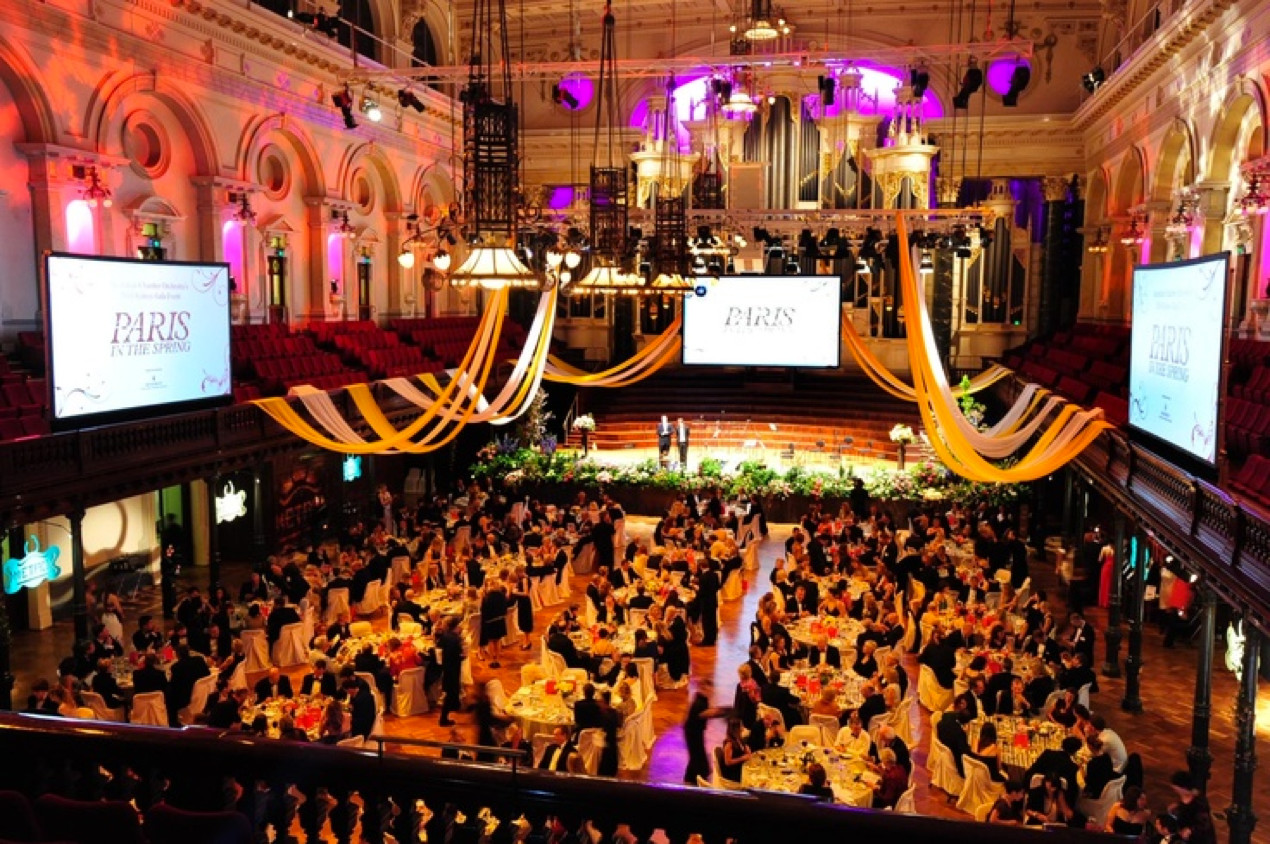
When I tell event organisers this, they immediately relax. They realise that I’ve done their job before and know exactly how stressful it can be on the day. They also know that I will make sure that my part (providing the keynote address) will go without a hitch and I will be one less thing they have to worry about.
While I realise many people reading this post may not have had the same event production experience, if you follow some of my tips below you will become the organiser’s best friend and ensure that your presentation is well received by the audience and the event crew. It also means that you might be booked again, or have others recommend you – including those from the event team.
Andrew’s top public speaking tips:
1. Arrive early at the venue. This may be obvious, but as someone who has produced large shows before, knowing the guest speaker/keynote presenter is actually in the building early reduces the stress levels considerably. Being early means that you can survey the venue and check out the stage, sightlines, lighting and acoustics.
If you have to modify your delivery because of any of these, then being there early will give you the chance to do this.
2. Find and befriend the tech team. I cannot underestimate this point. The tech team will be your partners before and during your talk – you need them to understand any of your technical requirements well before you step on the stage. Getting there early (preferably before anyone else) means you will also have exclusive time to fine tune your AV needs with the tech team.
Below I am pictured meeting AV Technician Richard at the 5P conference in London. Having arrived well before my speaking slot (closing keynote) we had plenty of time to talk through what I needed.
Richard was kind enough to run a cable to allow me to present with my laptop on stage. While taking this photo, I asked him if it made a difference to him if presenters make themselves known and personally meet the tech team. A huge difference was the answer. I’ve also found that by knowing the team by name when things do go wrong (and they inevitably do), they will have your back because you’ve made a personal investment in meeting them and treating them as equal.

My preferred tech setup is below:
- my Mac on stage so I can use presenter view to see the current and next slides in front of me
- a lapel radio microphone so I can wander the stage as I talk
- HDMI connection from my Mac so video and audio is sent at the highest quality and uses a single connection
- I use my own clicker – a
Logitech R400Logitech Spotlight. It fits easily in your hand and makes almost no noise when advancing slides. It is also the preferred presenter for TED. - my iPad is on stage running pClock to show how much time I have left
This setup is often not what is provided when I arrive. Most organisers are reluctant to allow you to present from your own laptop because they want to run everything from the show laptop at the AV desk to prevent messy changeovers. I always push this point (my own laptop on stage) and if you are there early and have befriended the tech team then you are more likely to get your way on this. If you are not doing a main opening/closing keynote then they may be more reluctant to do this.
3. Befriend the event organiser. This person has the hardest job of the whole day and has had many a sleepless night as they iron out problems you and their client will never see. I always explain that I have done their job before (as a volunteer) and they visibly relax because they know we will both be speaking the same language all day. Having them know you’ve already met and agreed with the tech team on your final show setup will make them respect you even more, and possibly recommend you to other event organisers as a result.

4. Speak to the person taking photographs – and let them know you’re the keynote speaker etc. I always do this and as a result, have had some amazing photos taken of me in full flight. Photographers love to take exciting photos and if there are parallel streams running they are more likely to stop by your session (and stay) because they know there will be great shots.
When I was presenting at an event in New York earlier this year, event photographer Matt Greenslade provided me with a very valuable tip. “When you pace the stage, stop and pause at the end of your travel so I can capture a great shot when you are standing still”.
Since then, when I pace, I pause before I turn in the hope the event photographer will capture a great shot.
More recently, another event photographer suggested I smile more on stage!
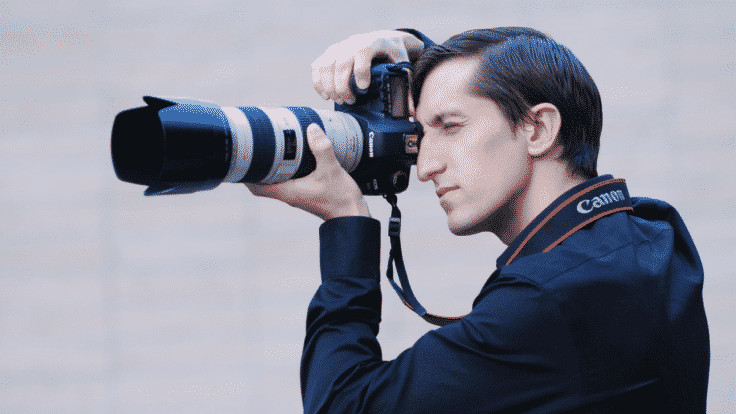
5. Video your presentation. This last point is not trivial. Back in 2016, I upgraded my video kit and I have literally taken it around the world with me and filmed every public speaking engagement. I seem to be the ONLY keynote presenter to do this!
I video my event (with my own professional equipment – full kit list here) for 2 key reasons.
Firstly – I can see how well (or not) I presented that day. I can review what worked well and how the audience interacted. I can correct mistakes for the next talk and also make overall content and delivery improvements. I’ve also asked experts such as Martin Brooks to review my delivery style and offer recommendations and having the full video makes this possible.
I have found that by viewing my talks back after each event I have significantly improved my delivery style and stage presence. Practice does make perfect, as does the ability to critically review each and every presentation soon after.
If I am quick editing the talk, I can have it up on my site later in the day, in time to tweet “in case you missed my talk…” along with the link and the event hashtag. This means that I’m the only keynote speaker you can watch again while still at the event (or somewhere around the world following the tweets).
Secondly – As a result of the videos I produce, I own the content and the copyright and therefore I don’t have to wait for the organiser to produce and publish the footage. I of course always ask for permission to film (no-one has ever denied this request), and always offer the raw footage to the organiser.
When I was assembling my professional presenter showreel earlier this year, I literally had dozens of talks to choose from, all recorded in high definition, with perfect audio, and with full permission to use the footage.
It amazes me that other presenters ask me how I manage to do this. Perhaps I am the only one silly enough to lug a camera kit around the world (and through airport security where they always get excited by the cables, antennas and batteries in my bag).
It has made a huge difference in that my showreel accurately reflects the variety of countries and audiences I have presented to, as well as the depth and breadth of content I cover.
6. Stick to time!
Again this may seem completely obvious, but how many of you have been to an event where the opening keynote has gone way overtime and as a result everything else suffers, and later presenters are often given less time to speak as a result. If I have been given 35 minutes to speak then I speak for 35:00 minutes exactly (or less).
How do I do this? I always take my iPad up on stage and have it running a countdown timer app called pClock (short for Presenter Clock) so I am always exactly on time. As I near the end of my allotted time, I can speed up or slow down as required to land on the exact timings.
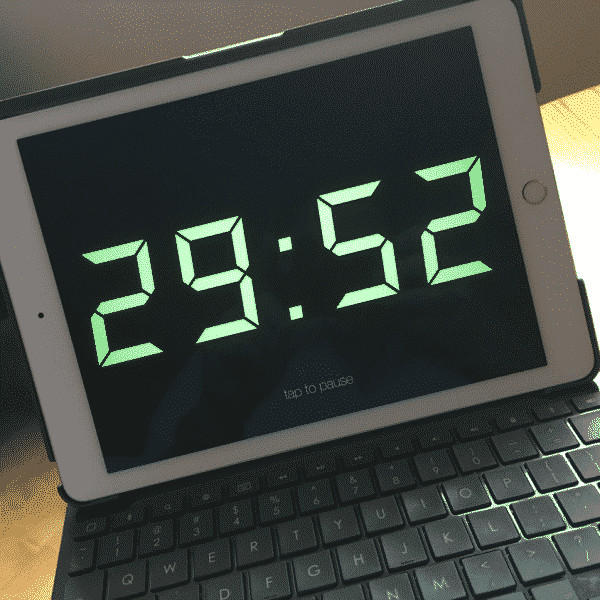
For those that have asked for a comprehensive overview of the kit I use, here is the list.
Camera: I use a Sony FDR-AX33 – 4K/HD camera. The camera can also stream live via Ustream. It has WiFi that allows me to check the angle and framing coming from the stage remotely on stage using my iPhone and an app called Play Memories from Sony. It records onto a SD card and I use a 128GB card which allows for around 5 hours of continuous filming. I also use large capacity camera batteries and always try to plug into a power outlet. The picture below shows the camera fitted with the Sony UWP-D11 wireless diversity receiver mentioned below in the audio section.
I keep the camera and all audio gear safely packed on a Manfrotto camera bag which I carry on as hand luggage.
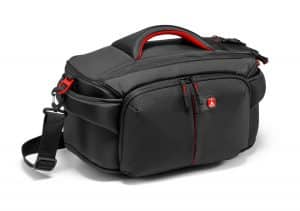
Tripod: I use only Manfrotto tripods. One is a compact with a 3 way head – and this is small enough to fit in my suitcase. It extends to a full 165cms / 65 inches so it will shoot over the heads of a seated audience if placed at the back.
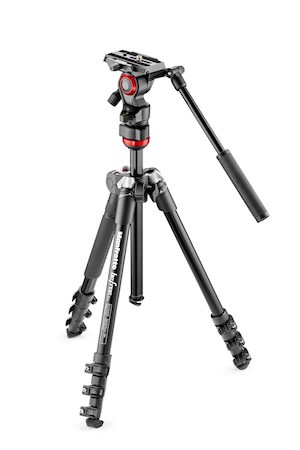
I also use a more sturdy 190X tripod with a fluid head for when I need a more solid setup (and yes I have taken this tripod around the world). Cabin crew ask if it is my trombone when it is packed in its carry case.
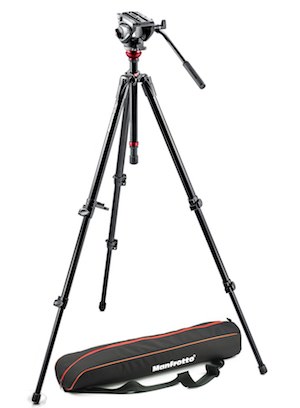
Audio: This is the most important part of the kit in my opinion. As the video will be a static shot of me on stage, the quality of the audio is absolutely key.
The particular camera I use is great because of the compact size, yet excellent picture quality, however it lacks direct XLR audio connectors found on larger and more expensive cameras. To overcome this, I use the Sony XLR-2KM audio box which allows 2 x XLR inputs with complete control over line level and gain. It sits on top of the camera and connects via an “intelligent” tripod shoe so the audio is routed straight to the camera without having to use the camera microphone input jack.
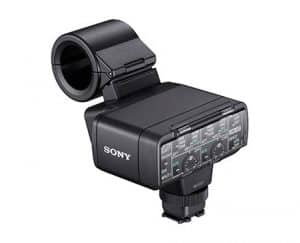
If you have made friends with the AV crew as per point 1 above, they will kindly run an audio “feed” from the main mixing desk to your camera so your audio and any audio from the laptop and roving mics during Q&A will be captured.
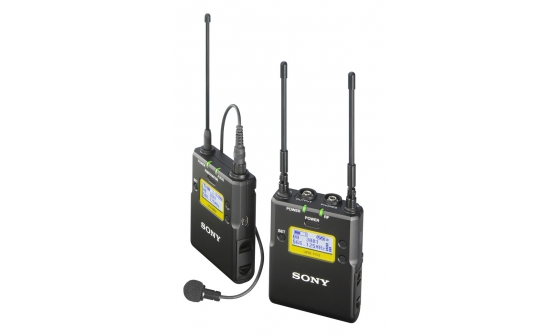
To capture my audio I use a Sony UWP-D11 Wireless microphone transmitter & receiver with a Sony ECM77MBMP lapel microphone. The mic supplied with the UWP-D11 is ok but for a more professional sound and look on stage the ECM77B is my choice. I wear 2 mics – my own and the one for the house as I don’t always get a clean audio feed to my camera and also as a backup to ensure I get clean audio if something happens with the feed from the mixing desk. I use rechargeable batteries as the UWP-D11 kit allows the transmitter and receiver to be charged via a USB port.
The range of this kit is excellent, and the receiver has “diversity” in that has 2 receivers (all fed by a separate antenna – hence 2 antennas in the picture) so if the signal drops on one receiver, the audio is picked up by the other. I have run this system in large halls and rarely had a problem with range and interference. The units operate in the 600MHz UHF band and can be tuned to multiple frequencies. As you’re already friends with the tech team, you will know what frequencies they are using for their radio mics and ensure you’re well away from their channels.
Video and Audio files: If you use video or audio in your presentations – take note of this tip!
Embed ALL your videos and sound files on your laptop locally. If you need to use the venue WiFi to play a video – it will fail (and you will look super unprofessional). All recent versions of PowerPoint allow you to embed and play videos locally.
There are a number of programs that let you download YouTube files (google this) so you can have a local copy of the mp4 video on your laptop.
Editing: I use Adobe Premiere Pro CC – I have been editing with this for years and it gives you more flexibility than Final Cut Pro in my humble opinion. Also, buy yourself some external hard drives for storage. One 30 minute talk can be up to 30GB in size from the camera. I edit all my talks myself using Premiere Pro.
Hosting: I host all of my videos on Vimeo. It gives you much more control over branding, embedding and provides the ability to present your videos in a much better way than on YouTube. I cross-post key videos on YouTube for the greatest reach, but for all of the videos on my site and blogs, I use Vimeo exclusively.
If you implement just some of these tips, you will be on track to become a great public speaker! Watch me implement all of these tips below in my keynote showreel.

